Neb reverse transcriptase kit
- Product Information
- Protocols, Manuals & Usage
- Tools & Resources
- FAQs & Troubleshooting
- Citations & Technical Literature
- Quality, Safety & Legal
ProtoScript® II Reverse Transcriptase is a recombinant M-MuLV reverse transcriptase with reduced RNase H activity and increased thermostability. It can be used to synthesize first strand cDNA at higher temperatures than the wild type M-MuLV. The enzyme is active up to 48°C, providing higher specificity, higher yield of cDNA and more full-length cDNA product up to 12 kb.
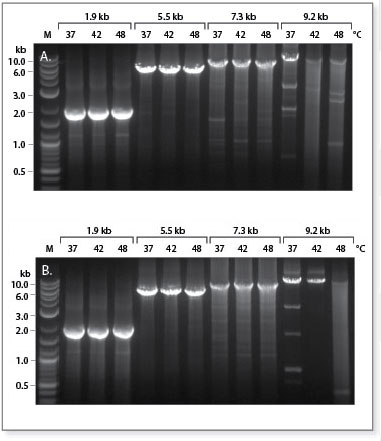
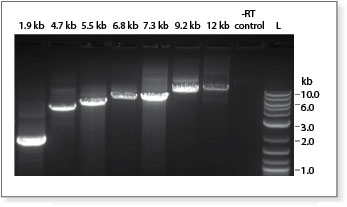
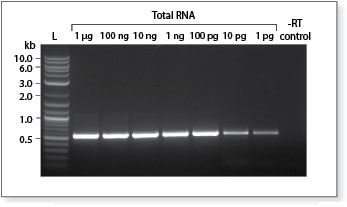
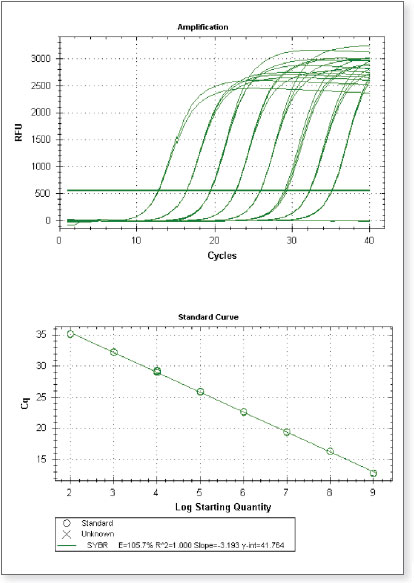
Product Source
The gene encoding a mutant M-MuLV Reverse Transcriptase (RNase H – ) is expressed in E. coli and purified to near homogeneity.
Reagents Supplied
The following reagents are supplied with this product:
| NEB # | Component Name | Component # | Stored at (°C) | Amount | Concentration |
| ProtoScript ® II Reverse Transcriptase | M0368SVIAL | -20 | 1 x 0.02 ml | 200,000 units/ml |
| ProtoScript ® II Reverse Transcriptase Reaction Buffer | B0368SVIAL | -20 | 1 x 1.5 ml | 5 X |
| DTT | B1034AVIAL | -20 | 1 x 0.5 ml | 0.1 M |
| ProtoScript ® II Reverse Transcriptase | M0368LVIAL | -20 | 1 x 0.05 ml | 200,000 units/ml |
| ProtoScript ® II Reverse Transcriptase Reaction Buffer | B0368SVIAL | -20 | 1 x 1.5 ml | 5 X |
| DTT | B1034AVIAL | -20 | 1 x 0.5 ml | 0.1 M |
| ProtoScript ® II Reverse Transcriptase | M0368LVIAL | -20 | 4 x 0.05 ml | 200,000 units/ml |
| DTT | B1034AVIAL | -20 | 4 x 0.5 ml | 0.1 M |
| ProtoScript ® II Reverse Transcriptase Reaction Buffer | B0368SVIAL | -20 | 4 x 1.5 ml | 5 X |
Properties & Usage
Unit Definition
One unit is defined as the amount of enzyme that will incorporate 1 nmol of dTTP into acid-insoluble material in a total reaction volume of 50 μl in 10 minutes at 37°C using poly(rA)•oligo(dT)18 as template.
Reaction Conditions
1X ProtoScript ® II Reverse Transcriptase Reaction Buffer
Incubate at 42°C
1X ProtoScript ® II Reverse Transcriptase Reaction Buffer
50 mM Tris-HCl
75 mM KCl
3 mM MgCl2
(pH 8.3 @ 25°C)
Storage Buffer
20 mM Tris-HCl
100 mM NaCl
1 mM DTT
0.1 mM EDTA
50% Glycerol
0.01% IGEPAL® CA-630
pH 7.5 @ 25°C
Heat Inactivation
65°C for 20 minutes
Unit Assay Conditions
50 mM Tris-HCl (pH 8.3), 75 mM KCl, 6 mM MgCl2, 10 mM dithiothreitol, 0.01% IGEPAL CA-630, 0.5 mM dTTP, 0.4 mM poly(rA)•oligo(dT)18.
Companion Products
- ProtoScript® II Reverse Transcriptase Reaction Buffer
- ProtoScript® II First Strand cDNA Synthesis Kit
- Oligo d(T)23 VN
- Oligo d(T)18 mRNA Primer
- RNase Inhibitor, Murine
- Deoxynucleotide (dNTP) Solution Mix
- Deoxynucleotide (dNTP) Solution Set
- Antarctic Thermolabile UDG
- NEBNext® Ultra II Non-Directional RNA Second Strand Synthesis Module
Notes
- Reaction Conditions:
1X ProtoScript II Reverse Transcriptase Reaction Buffer, 10 mM DTT, 200 units ProtoScript II Reverse Transcriptase, supplemented with 0.5 mM dNTPs (not included) and 5 µM dT23VN (not included). Incubate at 42°C for 50 minutes. If random primers are used, a 10 minute incubation at room temperature is recommended before transferring to 42°C.
References
- Roth, M.J., Tanese, N. and Goff, S.P. (1985). J. Biol. Chem.. 260, 9326-9335.
- Kotewicz, M.L. et al, (1988). Nuc. Acids Res.. 16, 265-277.
- Lim, D. et al, (2006). J. Virol.. 80, 8379-8389.
- Sambrook, J., Fritsch, E.F. and Maniatis, T. Cold Spring Harbor: Cold Spring Harbor Laboratory Press.(Ed.), Molecular Cloning: A Laboratory Manual. 1989, pp. 5.52-5.55, 8.11-8.17.
Protocols
- First Strand cDNA Synthesis (Quick Protocol) (NEB #M0368)
- First Strand cDNA Synthesis (Standard Protocol) (NEB #M0368)
- First Strand cDNA Synthesis (No-RT Negative Control Reaction) (NEB #M0368)
Usage Guidelines
Selection Charts
FAQs
- What is the difference between NEB# M0368 and NEB# M0253?
- What is the optimal reaction temperature for ProtoScript II Reverse Transcriptase (M0368)?
- Can the cDNA products be used in real-time PCR analysis?
- What thermostable DNA polymerase can be used for PCR after cDNA synthesis?
- How can the yield be improved when using ProtoScript II Reverse Transcriptase?
- How can the length of the product generated by M-MuLV Reverse Transcriptase be increased?
- Is RNaseH treatment required before PCR amplification?
- What is the difference between Induro Reverse Transcriptase (NEB #M0681) and ProtoScript II Reverse Transcriptase (NEB #M0368)?
- Why do I have low cDNA yields?
- How do I know whether my template RNA is of good quality?
Citations

Additional Citations
- Terry Fei Fan Ng, Nikola O Kondov, Xutao Deng, Alison Van Eenennaam, Holly L Neibergs, Eric Delwart (2015) A metagenomics and case-control study to identify viruses associated with bovine respiratory disease. J Virol 89, 5340-9.PubMedID: 25740998, DOI: 10.1128/JVI.00064-15
Quality Control Assay
Quality Control tests are performed on each new lot of NEB product to meet the specifications designated for it. Specifications and individual lot data from the tests that are performed for this particular product can be found and downloaded on the Product Specification Sheet, Certificate of Analysis, data card or product manual. Further information regarding NEB product quality can be found here.
Specifications
- M0368S_L_X_v1
- M0368S_L_X_v2
Certificate of Analysis
- M0368S_L_X_v1_0041507
- M0368S_L_X_v1_0041609
- M0368S_L_X_v1_0041703
- M0368S_L_X_v1_0041709
- M0368S_L_X_v1_0041803
- M0368L_v1_10014288
- M0368X_v1_10014182
- M0368X_v1_10016622
- M0368X_v1_10019476
- M0368X_v1_10021770
- M0368L_v1_10016644
- M0368X_v1_10021810
- M0368S_v1_10021840
- M0368X_v1_10025042
- M0368L_v1_10029219
- M0368X_v1_10029610
- M0368X_v1_10031042
- M0368L_v1_10032569
- M0368X_v1_10032570
- M0368X_v1_10034218
- M0368L_v1_10034223
- M0368X_v1_10035638
- M0368X_v1_10041818
- M0368L_v1_10043935
- M0368X_v1_10043531
- M0368L_v1_10038761
- M0368X_v1_10046832
- M0368L_v1_10047964
- M0368X_v1_10047952
- M0368X_v1_10050346
- M0368S_v1_10050348
- M0368L_v1_10048266
- M0368S_v1_10054116
- M0368X_v1_10052305
- M0368L_v1_10056299
- M0368S_v1_10057927
- M0368X_v1_10056163
- M0368X_v1_10060136
- M0368S_v1_10062061
- M0368X_v1_10062060
- M0368L_v1_10062059
- M0368X_v1_10064594
- M0368L_v1_10066619
- M0368L_v1_10067839
- M0368X_v1_10067245
- M0368S_v2_10064596
- M0368L_v2_10070296
- M0368S_v2_10070299
- M0368X_v2_10071585
- M0368L_v2_10071584
- M0368X_v2_10072055
- M0368L_v2_10075741
- M0368X_v2_10075745
- M0368L_v2_10077548
- M0368X_v2_10077549
- M0368L_v2_10080913
- M0368L_v2_10081379
- M0368S_v2_10072108
- M0368X_v2_10081378
- M0368L_v2_10087492
- M0368X_v2_10086489
- M0368X_v2_10090919
- M0368X_v2_10092253
- M0368L_v2_10094717
- M0368X_v2_10094714
- M0368X_v2_10095776
- M0368L_v2_10098370
- M0368X_v2_10104718
- M0368L_v2_10104716
- M0368S_v2_10106597
- M0368X_v2_10107191
- M0368X_v2_10111716
- M0368L_v2_10106544
- M0368X_v2_10114927
- M0368X_v2_10117823
- M0368L_v2_10118257
- M0368X_v2_10121780
- M0368L_v2_10122365
- M0368X_v2_10122366
- M0368S_v2_10126675
- M0368S_v2_10132790
- M0368X_v2_10131220
- M0368L_v2_10129698
- M0368X_v2_10135894
- M0368L_v2_10138804
- M0368X_v2_10138805
- M0368X_v2_10140521
- M0368L_v2_10140520
- M0368X_v2_10142632
- M0368X_v2_10145290
- M0368L_v2_10145292
- M0368L_v2_10149564
- M0368X_v2_10148501
- M0368S_v2_10152862
- M0368L_v2_10152863
- M0368X_v2_10152163
- M0368L_v2_10155083
- M0368X_v2_10157006
- M0368L_v2_10160443
- M0368X_v2_10162266
- M0368S_v2_10165009
- M0368L_v2_10168292
- M0368X_v2_10166602
- M0368X_v2_10175351
- M0368L_v2_10180399
- M0368X_v2_10180398
- M0368L_v2_10183716
- M0368X_v2_10183715
- M0368L_v2_10187670
- M0368L_v2_10194198
- M0368S_v2_10187668
- M0368X_v2_10187671
- M0368S_v2_10198143
- M0368L_v2_10198142
- M0368S_v2_10203202
- M0368L_v2_10202237
- M0368X_v2_10198144
- M0368L_v2_10206016
- M0368S_v2_10206651
- M0368X_v2_10206692
- M0368L_v2_10216381
- M0368L_v2_10225877
- M0368S_v2_10212819
- M0368X_v2_10216382
- M0368X_v2_10223533
- M0368S_v2_10226652
- M0368L_v2_10230700
- M0368X_v2_10230699
- M0368L_v2_10234101
- M0368X_v2_10237735
- M0368S_v2_10237734
- M0368L_v2_10240882
- M0368X_v2_10240884
- M0368S_v2_10246925
- M0368L_v2_10248334
- M0368X_v2_10248335
Safety Data Sheets
- ProtoScript ® II Reverse Transcriptase
- ProtoScript ® II Reverse Transcriptase Reaction Buffer
- DTT
Legal And Disclaimer
Products and content are covered by one or more patents, trademarks and/or copyrights owned or controlled by New England Biolabs, Inc (NEB). The use of trademark symbols does not necessarily indicate that the name is trademarked in the country where it is being read; it indicates where the content was originally developed. The use of this product may require the buyer to obtain additional third-party intellectual property rights for certain applications. For more information, please email busdev@neb.com.
This product is intended for research purposes only. This product is not intended to be used for therapeutic or diagnostic purposes in humans or animals.
New England Biolabs (NEB) is committed to practicing ethical science – we believe it is our job as researchers to ask the important questions that when answered will help preserve our quality of life and the world that we live in. However, this research should always be done in safe and ethical manner. Learn more.

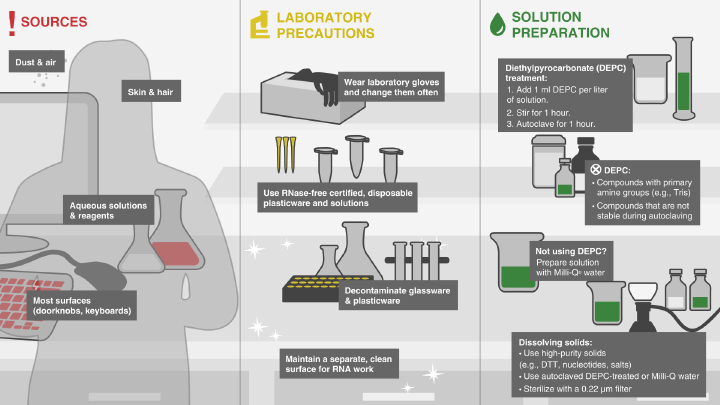





![]()